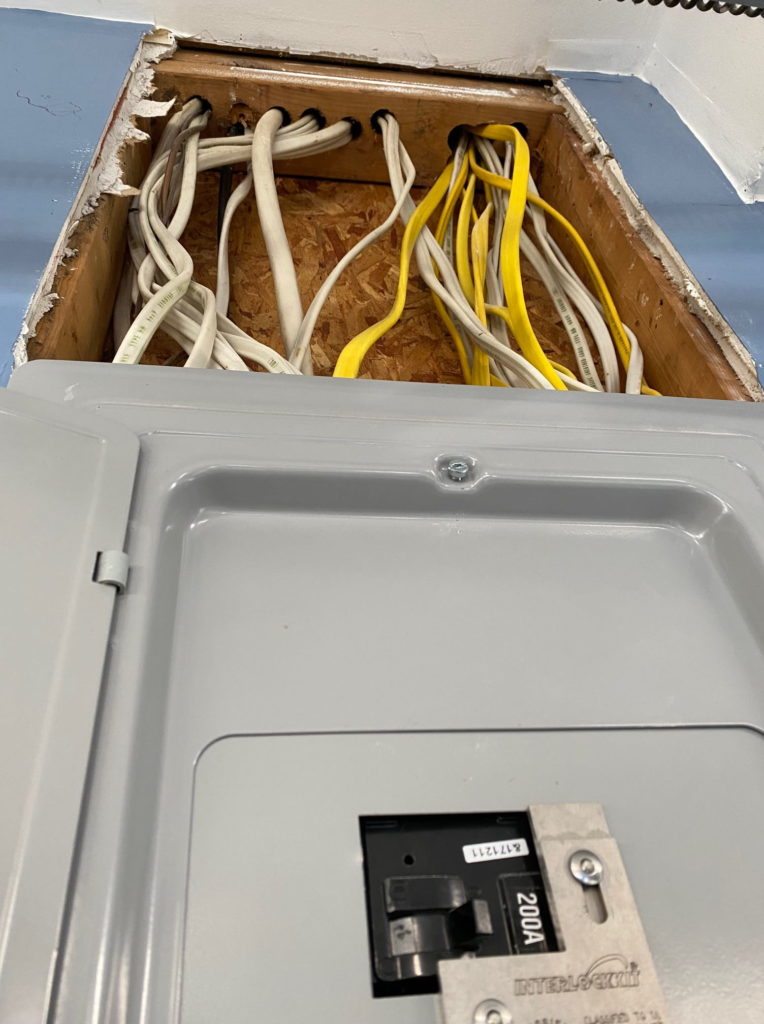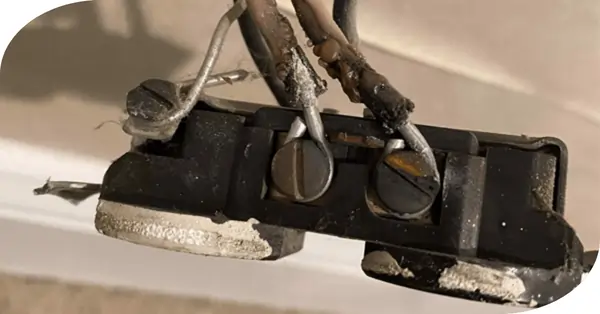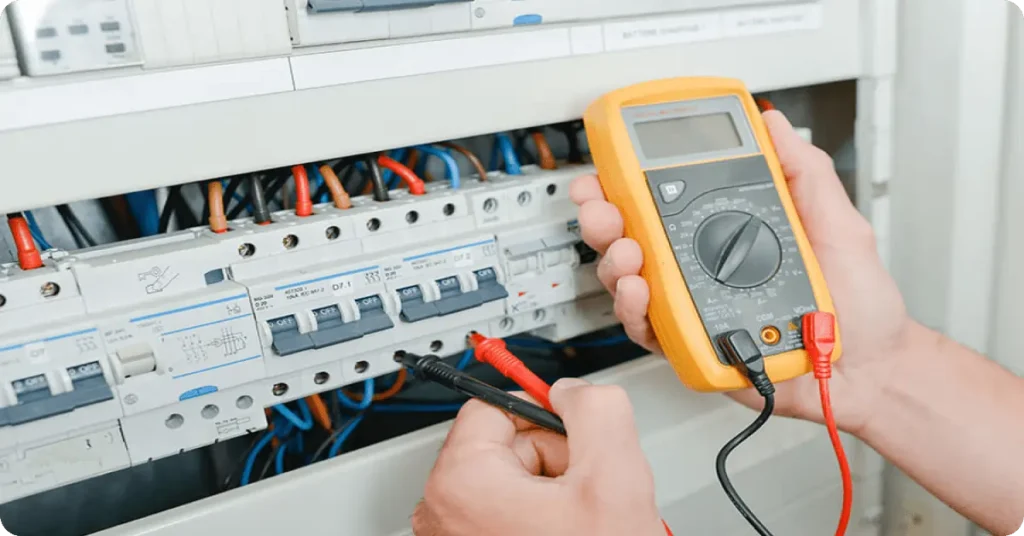Installing A New Circuit In An Electrical Panel: What is Involved
You’re here because you’ve been told or have decided on your own that you need a new circuit installed. If you’re unclear on what exactly is involved in the installation of a new circuit, this article isf for you.
Electrical Circuit Definition: The cabling between the breaker in the electrical panel and the end device(s) resulting in a closed loop. There can be more than one receptacle on a circuit or in the case of a Dedicated Circuit there may be only one receptacle or device (think electric range).
In this article I’m not at any point referring to the addition of receptacles or lighting to an existing circuit, everything pertains to the installation of a new circuit from the electrical panel to the end device. There are only 4 reasons for needing a new circuit installed at your home:
- An appliance or device is overloading an existing circuit
- A new appliance, or equipment is being installed and needs its own special circuit.
- An extension is being added to the home
- An old circuit failed and needs to be replaced
Scenario 1 typically happens with older houses that have 15A circuits supplying many receptacles and lights. They can become overloaded very easily, especially when an appliance or a device that uses heat is in use (toaster, microwave, hairdryer). These devices use much more power and lead to overloads which causes the breaker to trip in order to protect the wiring of that circuit.
Scenario 2 happens when you buy some piece of equipment that needs its own special circuit. Most common today are air conditioners, hot tubs, pools, EV chargers, etc. These types of circuits are typically of the 240V type but we need not concern ourselves with that just yet. If you’re still sure you need a new circuit, read on.
Scenarios 3 and 4 are self explanatory so we won’t go in to detail on those
Installation:
Take a look at the picture below for an illustration I made of an actual complete yet very simple circuit (don’t mind the absence of bottom screws on the panel cover, that’s not okay for a finished installation). The installation of a new circuit will start at a breaker in your electrical panel (1. in picture), consist mainly of cabling (2. in picture) and terminate at the location of the new receptacle(s) (3. in picture). I say receptacle here because almost all new equipment and appliances need a receptacle as per NEC rather than being wired directly in to the appliance. Hopefully there are some unused spaces in the electrical panel for the new circuit breaker that will protect the new circuit. Many times, other circuits can be combined to make space. If not, SOME panels are rated to take tandem breakers (see Tandem Breakers and Legal Uses). Other times, you may be needing a larger panel/service to accommodate the space and/or power draw(see Do I need a Panel or Service Change?).

Out of the electrical panel will be the new circuit conductors, these are typically in a cable such as the common NM (white, yellow, orange, black non metallic cables with conductors inside them) or AC (metal jacketed cable with conductors inside), or in a conduit leading to the end point of the circuit. See the picture below for examples of NM wires leaving the panel with the wall cut away (afterwards all were reinstalled and securely fastened as per NEC).

This is the difficult part for many homeowners to understand. Where the circuit terminates determines the difficulty (pronounced price) of the project depending on how the circuit conductors need to be navigated. A simple EV charger installed 4 feet away from an electrical panel located in a garage is much easier and less expensive to install than one located in a detached garage that is 40 feet from the home. Use common sense to gauge how difficult this will be to achieve. Sometimes installing a new circuit is much more difficult where there is no attic or basement access and a conduit needs to be run outside the home to either access the attic or continue on to the location of the receptacle.
There is sometimes just a bit of magic in the process. Great electricians have ways of getting new cables into places that seem unimaginable without having to cut sheetrock.
How a circuit is run from the electrical panel to the end location
Circuits can be run in many different ways. In ideal situations, to get from one side of a home to another most electricians will utilize an unfinished basement or an attic. Again, the wire needs to get to either of these locations first before it can be pulled across and secured. Projects like this typically involve multiple electricians and helpers.
Most reputable electricians will explain to you how they are going to run the circuit ahead of time. If not you need to ask to avoid any surprises. For example:
- Will holes need to be cut in my ceiling/walls to install the new circuit?
- Will there be conduit installed on the outside of the home?
- Will a trench be dug outside (do you need a markout)?
How much does a new circuit cost?
If you’ve read anything up to this point you’ll see that the variables when installing a new circuit are absolutely innumerable. A simple circuit very close to an unobstructed electrical panel that has space for a new breaker would be somewhere in the ballpark of $250. Material alone is going to make up half of that with prices today and the necessity of AFCI and GFCI breakers/devices. A more complex circuit, for example a new circuit for an EV charger or for new pool equipment typically runs between $1800-$7000 depending on the distance, amperage needed, and obstacles.
I hope this article was of some assistance with whatever project is before you. As always feel free to contact us with any questions or comments and check out our National Electrical Registry to find a reputable electrician near you.
**Pro tip!** You very likely DO NOT need a service or panel upgrade for the installation of a new circuit unless your panel is completely full. PLEASE don’t let anyone sell you a panel upgrade unless you’re sure you need it. Refer to New Panel Vs New Circuit for better understanding the very drastic difference.
The only reasons you would need a new circuit are:
- There is an overloaded circuit (ex. toaster and microwave on same circuit)
- A new appliance or device needs a new circuit
- New construction or an extension is being built
- An old circuit is damaged in a location that can not be accessed easily
A new circuit always originates at the main panel or a sub panel. A new breaker is installed and then the necessary wires and/or cabling to the final destination, most typically a new receptacle or equipment.
There are many factors here but anywhere from $250 for a small 15 or 20A circuit up to thousands for a large circuit that is run a great distance through many obstacles such as an outdoor pool circuit that is 200 feet from the main panel.



